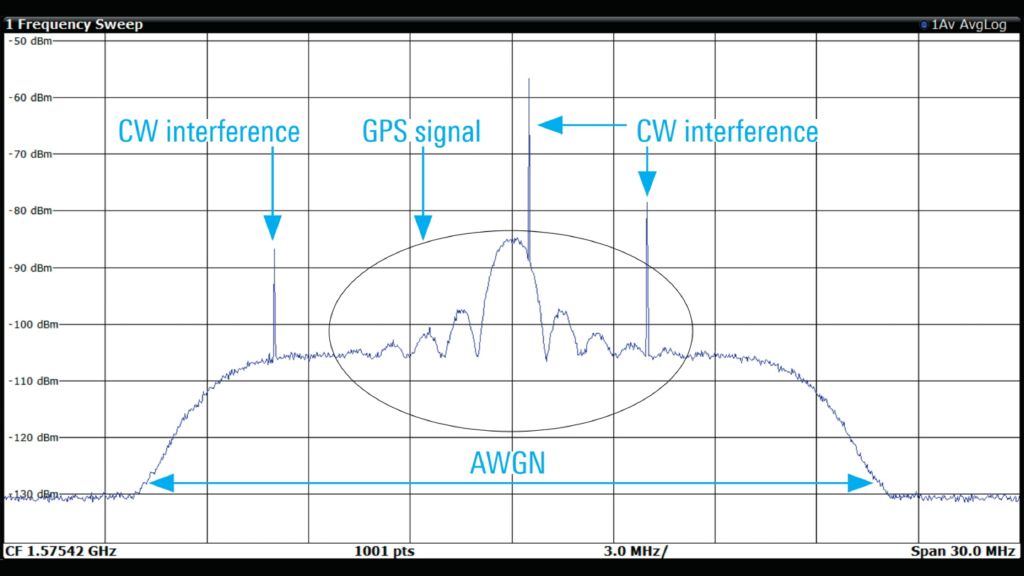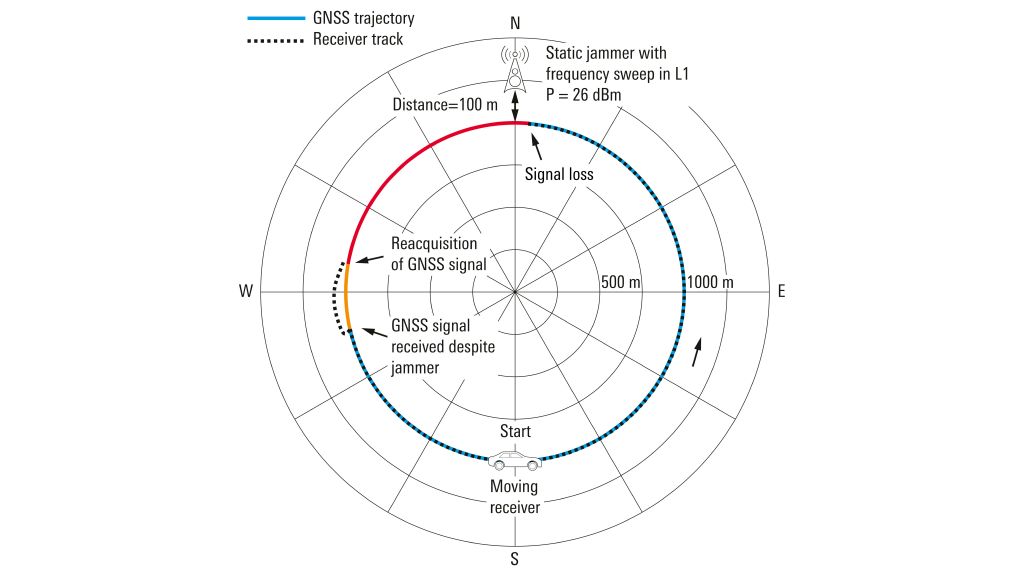Dynamic simulation of a jammer scenario
The scenario on the left shows a co-simulation of a moving GNSS receiver and a static jammer. The test case is to examine the receiver‘s behavior nearby an interference source when it loses its position fix and determine how long it takes the receiver to reacquire the GNSS signal.
The R&S®SMW200A generates GNSS signals for a receiver moving counterclockwise on a circular trajectory. The receiver starts at the 6 o’clock position in the southernmost point of the map on the left. A jammer is placed at the 12 o’clock position, 100 m north of the trajectory. TheR&S®Pulse Sequencer software is then used to calculate the received jammer signal for all positions along the trajectory. Both signals are combined in an external combiner and fed into a GNSS receiver.
The receiver can provide a position when starting its movement (blue part of the trajectory). With the receiver moving closer to the jammer, the power level of the jammer signal increases until the receiver loses its lock on the GNSS signals (red part of the trajectory). When the receiver moves further away from the jammer, the power level of the jamming signal decreases, which allows the receiver to reaquire the GNSS signals (orange track).









